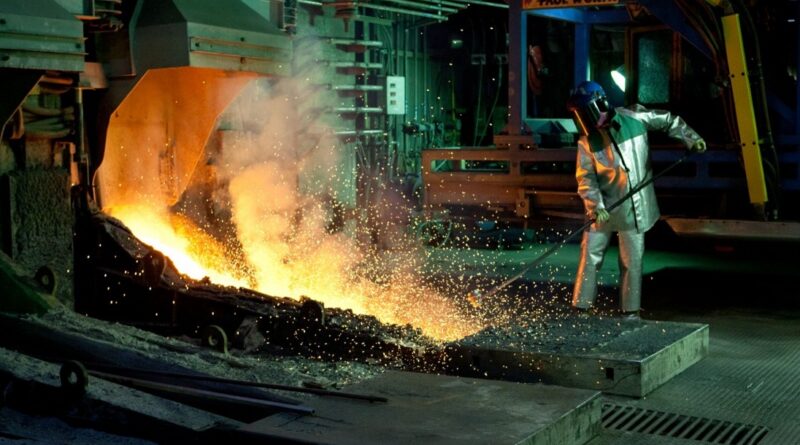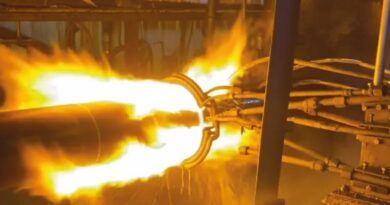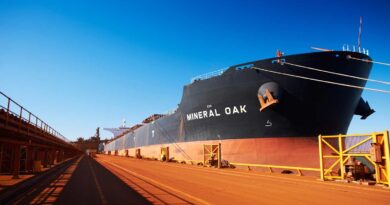GLENCORE: expects meeting full year production guidance 2025
Glencore in its 2025 Half-Year Report states that over the first half, it has continued to make significant progress in optimising the business and positioning for further value accretive growth.
A comprehensive review of its industrial portfolio during the period has recognised opportunities to streamline our industrial operating structure, to optimise departmental management and reporting, and to support enhanced technical expertise and operational focus.
The review also identified c.$1 billion of recurring cost savings opportunities (against a 2024 baseline) across our various operating structures, which are expected to be fully delivered by the end of 2026, with more than 50% already targeted for the end of 2025.
Glencore’s Chief Executive Officer, Gary Nagle, commented: “In our recent production report, we reiterated our expectation of meeting full year production guidance, with the ranges tightened to reflect performance to date. While our zinc and coal assets are largely operating at the required run rates to deliver full-year volumes, our copper business is currently navigating various temporary, but largely expected, operational factors, including mine sequencing, lower grades, water constraints and cobalt stockpiling. These significantly impacted H1 2025 production at Collahuasi, Antamina, Antapaccay and KCC, with all these operations expecting a substantial step-up in H2.
“Primarily reflecting weaker coal prices during the period and the impact of the lower copper production in H1 2025, Industrial Adjusted EBITDA of $3.8 billion was 17% down on H1 2024. Marketing provided an overall solid Adjusted EBIT contribution of $1.4 billion, 8% lower than H1 2024. In aggregate, Glencore’s Adjusted EBITDA of $5.4 billion was 14% lower than H1 2024.
“After funding $3.2 billion of net capex, $1.8 billion of shareholder returns, and a $1.1 billion increase in non-Readily marketable inventories (RMI) working capital, via a number of commodity pre-pay/lending transactions expected to be high-returning, Net debt, including $1.0 billion of marketing lease liabilities, finished the half at $14.5 billion, up $3.2 billion from the end of 2024. With a Net debt to Adjusted EBITDA ratio of 1.08x (down to 1x, when reflecting the c.$900 million cash received on 2 July 2025 in connection with the sale of Viterra), we continue to have significant financial headroom and strength.
“We expect healthy cash flow generation and deleveraging in H2 2025, noting the 40/60 copper guidance production % split between H1 and H2, some unwind of the H1 non-RMI working capital investment, delivery of some of the cost savings above, and consideration of our regularly updated, illustrative annualised free cash flow generation at spot commodity prices, currently at a healthy c.$4 billion. Accordingly, we expect our ordinary course Net debt to meaningfully reduce by year-end.
“Upon completion of the Viterra sale in early July, we received c.$900 million in cash, as well as shares in Bunge equivalent to 16.4% of the enlarged company. Reflecting our capital allocation and leverage framework, we view these NYSE-listed Bunge shares as representing surplus capital (being warehoused for appropriate monetisation for Glencore shareholders at some point in the future), with a market value at the time of completion of c.$2.63 billion. Underpinned by the value of this shareholding, we announced a share buyback of up to $1 billion (less than 40% of the share value), to be concluded by the time of our 2025 annual results in February 2026.
“We will be paying the second tranche of our base dividend of $0.05 per share in September and incorporating the new up to $1 billion share buyback communicated in July, total announced 2025 shareholder returns increases to $3.2 billion.
“With the completion of the Viterra sales process, we have also increased our long-term through the cycle Adjusted EBIT Marketing guidance range to $2.3 to $3.5 billion. The new midpoint of $2.9 billion represents an increase of 16% from c.$2.5 billion (ex-Viterra).
“While there is much uncertainty around the impacts of geopolitics and trade in the shorter-term, we remain of the view that, in certain commodities, the scale and pace of required resource development will struggle to meet the demand projections for such materials into the future. We are well placed to participate in bridging this gap, through the flexibility embedded in both our Marketing and Industrial businesses to respond to global needs.”




